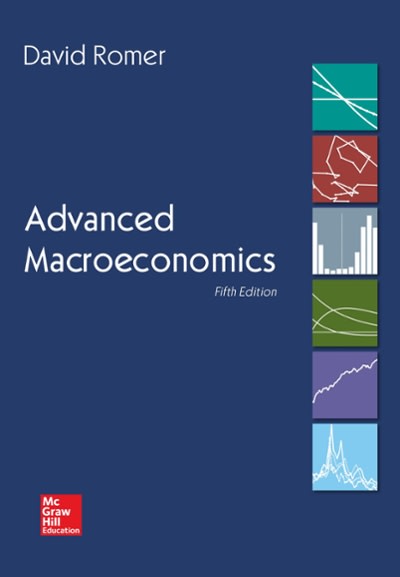Capital taxation in the Ramsey Cass Koopmans model. Consider a Ramsey Cass Koopmans economy that is on
Question:
Capital taxation in the Ramsey Cass Koopmans model. Consider a Ramsey Cass Koopmans economy that is on its balanced growth path. Suppose that at some time, which we will call time 0, the government switches to a policy of taxing investment income at rate τ . Thus the real interest rate that households face is now given by r(t) = (1 − τ )f
(k (t)). Assume that the government returns the revenue it collects from this tax through lump-sum transfers. Finally, assume that this change in tax policy is unanticipated.
(a) How, if at all, does the tax affect the c = 0 locus? The k = 0 locus?
(b) How does the economy respond to the adoption of the tax at time 0? What are the dynamics after time 0?
(c) How do the values of c and k on the new balanced growth path compare with their values on the old balanced growth path?
(d) (This is based on Barro, Mankiw, and Sala-i-Martin, 1995.) Suppose there are many economies like this one. Workers’ preferences are the same in each country, but the tax rates on investment income may vary across countries.
Assume that each country is on its balanced growth path.
(i) Show that the saving rate on the balanced growth path, (y∗ − c∗)/y∗, is decreasing in τ .
(ii) Do citizens in low-τ , high-k∗, high-saving countries have any incentive to invest in low-saving countries? Why or why not?
(e) Does your answer to part (c ) imply that a policy of subsidizing investment (that is, making τ < 0), and raising the revenue for this subsidy through lump-sum taxes, increases welfare? Why or why not?
( f ) How, if at all, do the answers to parts
(a) and
(b) change if the government does not rebate the revenue from the tax but instead uses it to make government purchases?
Step by Step Answer:







